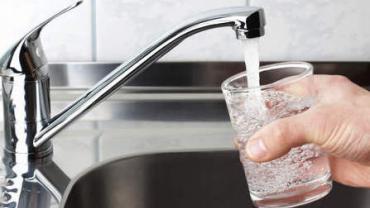
Sometimes it feels like there isn’t a whole lot the different nutrition camps agree on. High or low carb? Whole grains or gluten-free? Dairy: yay or nay? One thing most health professionals do agree on however is that adequate hydration is key. And while there may be a place for electrolyte- and vitamin-enhanced fluid replenishment beverages for certain populations contrary to what TV and print ads would have the public believe plain ol’ water is the best way to keep the body hydrated.
For years people have been encouraged to drink at least eight 8-oz glasses of water a day and even more than that if they live in a dry climate sweat a lot or are trying to lose weight. For some individuals bottled water sourced from a pristine spring in the Alps or the South Pacific is a luxury they can’t afford. Moreover due to concerns about the environment and the amount of plastic entering the refuse stream there are those individuals who prefer not to purchase bottled water. So for many people the majority of water they consume comes straight from the tap.
But what if in trying to follow generally accepted recommendations to drink a lot of water people are exposing themselves to potentially problematic compounds—many of which they’re not even aware are in their tap water?
Many surprising compounds lurk in clear odorless tap water that otherwise seems perfectly “clean.” Trace amounts of pharmaceutical drugs end up in many municipal water supplies due to excretion of these substances via urine and feces as well as people getting rid of excess supplies by flushing pills down the toilet. The drugs that have turned up most frequently are not surprisingly the ones that are prescribed quite frequently: antibiotics antidepressants oral contraceptives beta-blockers and painkillers. Unlike pathogenic organisms that are killed by chlorination and other municipal water treatment strategies filtering systems may not be equipped to remove metabolites of pharmaceuticals. And even though there may be only “trace amounts” of these in drinking water when people are actively encouraged to drink a lot of water—every day for their entire life—these trace amounts could potentially build up to larger amounts that may have an impact on health.
Other substances found in drinking water that people might wish to otherwise avoid include Teflon and perfluorooctanoic acid (PFOA). Studies are mixed as to the carcinogenicity and other potential health risks of these compounds but they may not be entirely safe either. High amounts of fluoride-containing compounds may interfere with the thyroid gland’s ability to concentrate iodine. In some geographic areas bottled water may not be much better. Another compound present in drinking water which may be problematic for thyroid function is perchlorate. Drinking water is not the primary source of perchlorate in the human body but it may be a kind of indirect source: for example among several different food categories evaluated for their contribution to the perchlorate load in the body dark green leafy vegetables were the largest source across all age groups. This may be the result of fertilizers containing perchlorate or of crops being irrigated with perchlorate-contaminated water.
There may be other potentially sinister compounds lurking in drinking water such as the herbicide atrazine which has endocrine-disrupting properties and may cause menstrual irregularities and compromised estrogen levels in women who consume it via local water supplies.
However lest this information come off as alarmist it’s important to keep things in perspective. Just as exposure to certain substances in conventionally grown vegetables and fruits shouldn’t prevent people from including these wholesome foods in their diet potentially problematic substances in drinking water should not put people off from consuming adequate water. The benefits of consuming conventionally grown produce outweigh the risks from eating no vegetables and fruits and those who cannot afford to drink exclusively filtered and “purity tested” water should not allow fear to cause them to dangerously limit water intake. The myriad effects of chronic dehydration are more harmful than exposure to minute amounts of questionable compounds in drinking water. But the more you are aware and the more you can filter out the better.